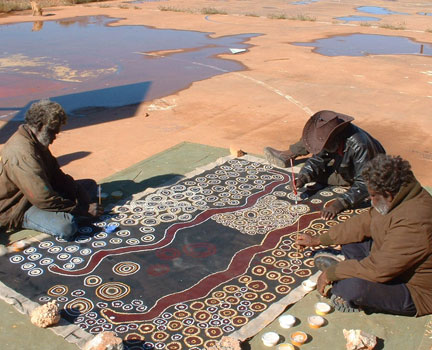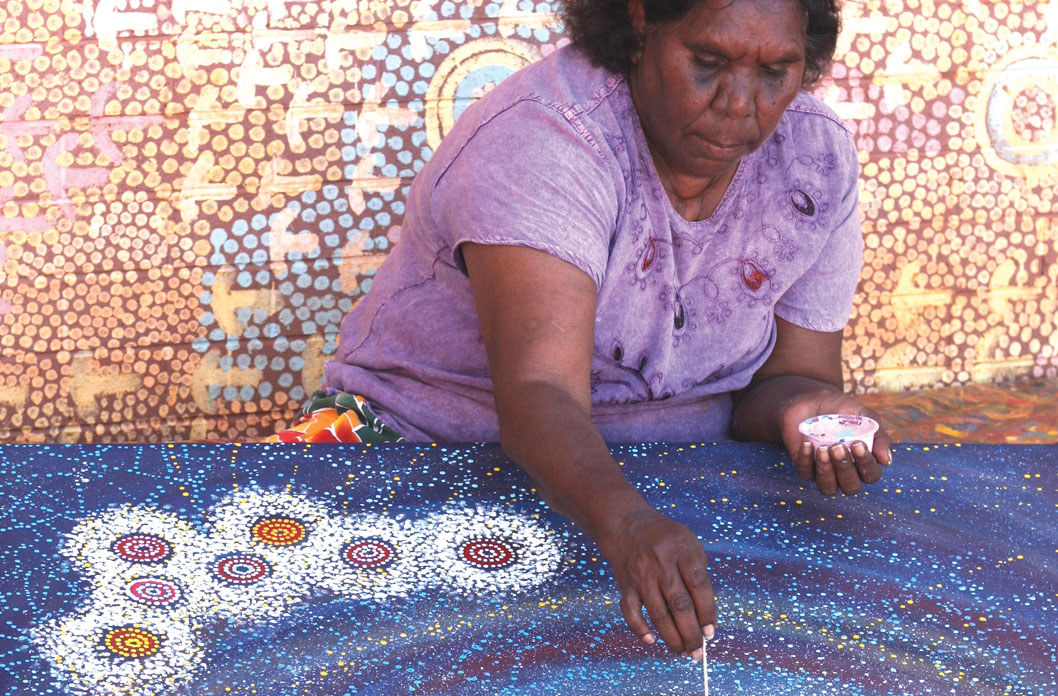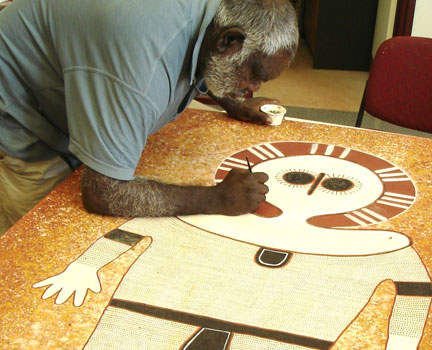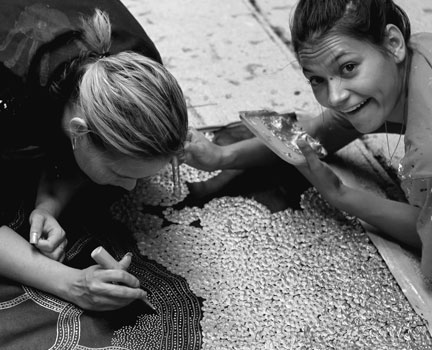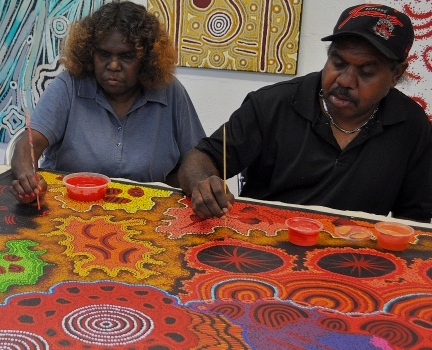Contemporary Aboriginal Art in Australia
The contribution of Contemporary Aboriginal Art in Australia has been of rapidly growing significance since the first desert works emerged from Papunya in 1971. At that time a young school teacher in the remote community of Papunya in Central Australia, keen to see what unique traditional work the Aboriginal children could produce, indirectly discovered that the elder men held a deep knowledge of traditional lore that they were prepared to apply onto painted boards.
The combination of Tingari Creation stories (1) and secret ceremonial songs and dances, revealed only to the initiated, were the foundation of the painted works that emerged over the next decade. These works have come to be greatly valued amongst Aboriginal art collectors, considered as foundation documents of the contemporary Aboriginal art movement.
Over subsequent decades the art movement spread to other remote communities in the Central and Western desert regions of Australia. Women artists joined the men to reveal aspects of their specific cultural and social knowledge, bringing new approaches to colour and subject. Differences in language and culture have developed into regional styles that have come to typify the diversity of Aboriginal communities across Australia.
The rise of contemporary Australian Aboriginal Art has been described by critic and writer Robert Hughes, as "the last great art movement of the twentieth century". The contradiction of the modernity of this art movement lies in the fact that Aboriginal culture is counted as the oldest continuous living culture in the world.
Forty years ago, we would Have viewed the material culture of Aboriginal society in Australia in ethnographic museums, and now we view it in museums of contemporary art. There has been a transformation of the perceptions of what Aboriginal culture has attained during its 50 – 60,000 years of occupation of the oldest continent on earth.
The effects of this art movement have been manifold, and the list of its successful outcomes include:
- Establishing cultural and historic ties to land as part of Native Title transactions
- Maintaining cultural and social cohesion via traditional education methods
- Providing economic stimulus, especially in remote communities
- Engendering cultural pride across generations
- Underpinning return to Country projects in outlying areas
So the desert artworks from remote regions, far from the coastal cities of Australia, have set up a dialogue that is having significant impacts on both the cities and the remote regions. The artists draw on a long tradition of oral storytelling using iconography that shares its roots with some of the oldest recorded art on the planet.
(1)Tingari – also called Dreamtime or Dreaming, the great Creation mythology particular to each Aboriginal language group. This lays down the laws and customs that define the social and spiritual world view of the group. Individuals are initiated into the laws through a series of ceremonies, finally achieving the role of Elder in the community.
Read More:


